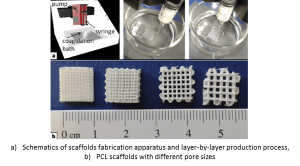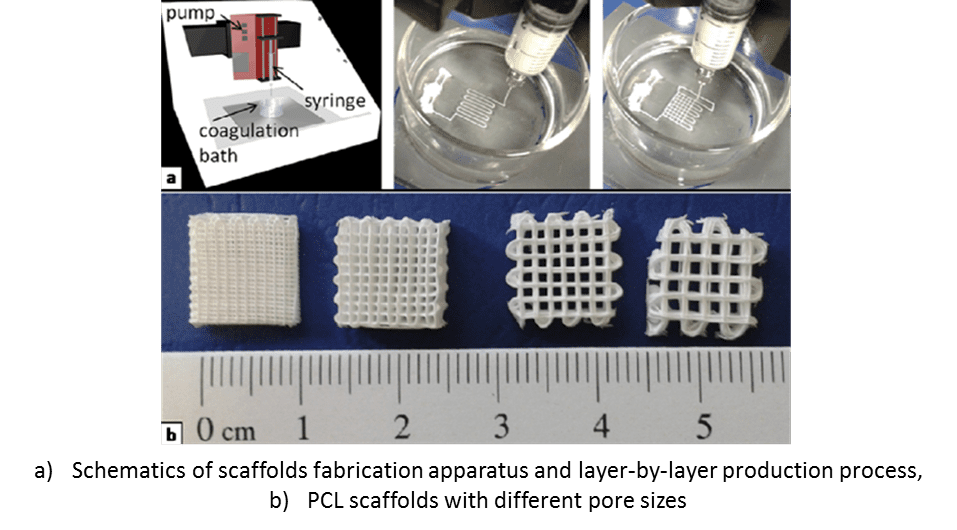Various inflammations of the tissue around teeth, such as periodontitis, can result in tooth loss and degeneration of supporting connective tissue and alveolar bone. As such, a common goal for tissue engineering has been finding a way to regenerate and repair the inflamed tissues.
A potential solution relies on polymers, such as PCL (poly (ε-caprolactone)), which has been tested in recent clinical studies. Polymeric scaffolds made from PCL have shown that when they are combined with other materials, an enhanced healing of human intrabony effects can be achieved. Although PCL is a biocompatible material with good blend-compatibility and is widely investigated across different biochemical applications, it shows slow biodegradation which can limit its application for biodegradable implantation.
A new study, published in Polymer International (Integrated three-dimensional fiber/hydrogel biphasic scaffolds for periodontal bone tissue engineering) suggests a new approach to overcome this issue. Low molecular weight PCLs were processed into highly porous scaffolds with a hydrogel phase. These scaffolds showed faster degradation rates and swelling properties. This happens due to the presence of hydrogels which possess inherent biocompatibility and biodegradability.

As shown in the above figure, a computer-aided wet-spinning fabrication process was employed to compose layer-by-layer PCL and PCL/hydroxyapatite (HA) composite scaffolds. The scaffolds were tested for their morphology, thermal, swelling, compressive and mechanical properties. In addition, their antibacterial activity was tested against E. coli and Staphylococcus Epidermidis.
Overall, this study explores new horizons for the development of innovative strategies focused on periodontal bone regeneration through the employment of bioactive functionalized scaffolds. The possibility of obtaining anatomically-shaped scaffolds by means of the developed preparation process, is part of ongoing research.

















